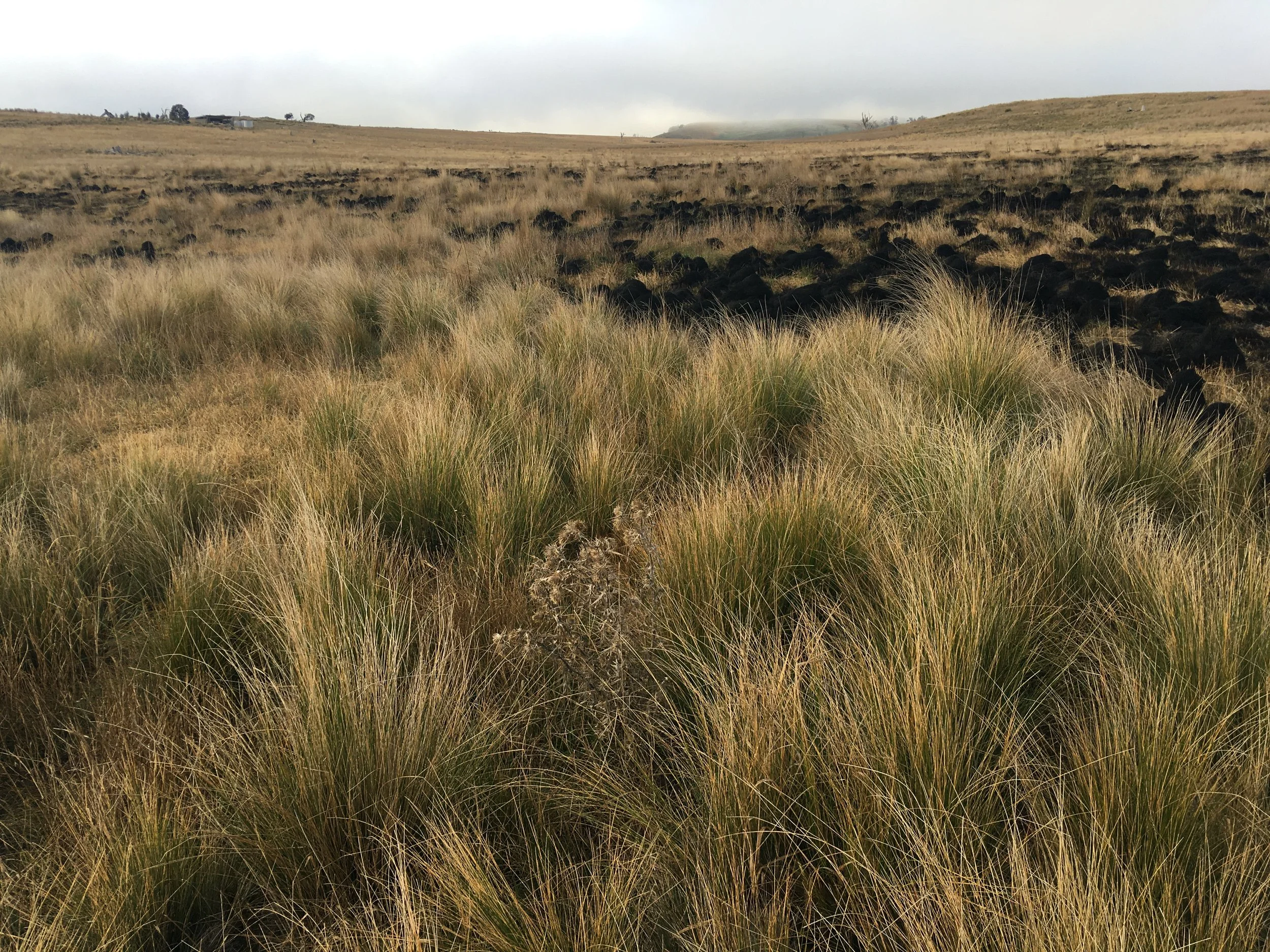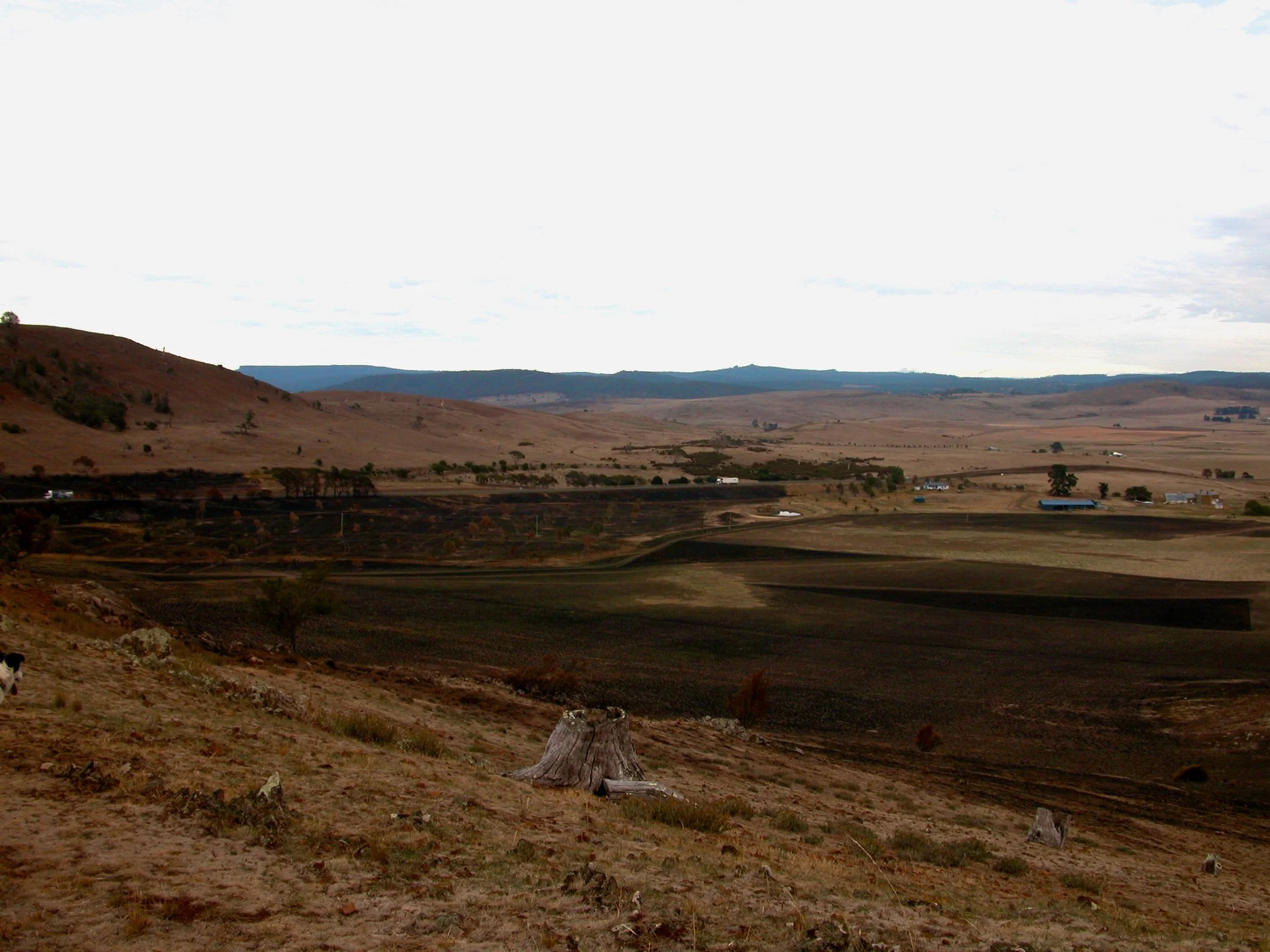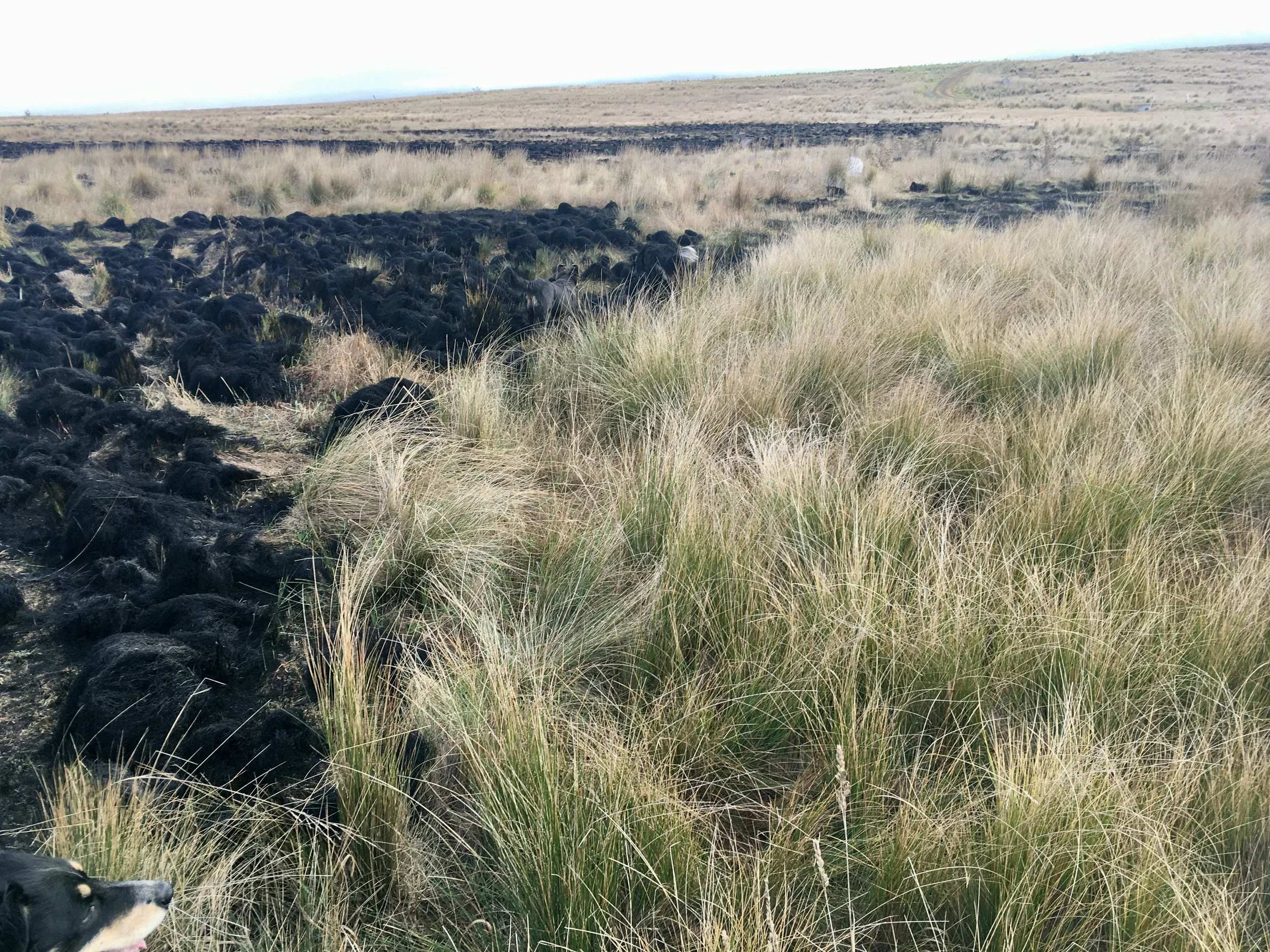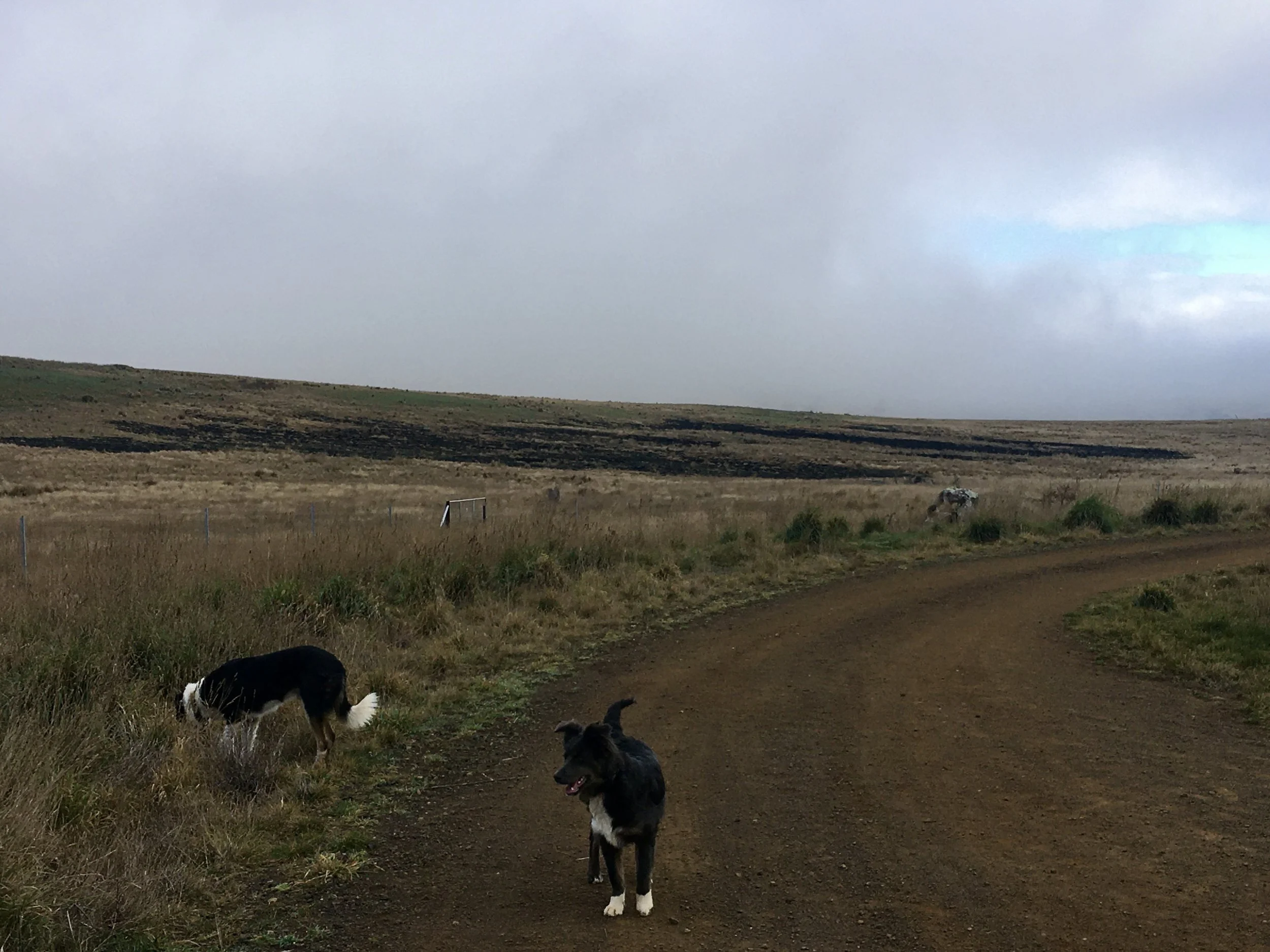Like the three bears’ porridge, managing biodiversity can be tricky to get just right: either too much grazing or too little can result in less species diversity. Diversity is critical for the resilience of the landscape and for the quality of nutrition for animals depending on it.
Fire, like grazing, can improve the vibrancy of the environment if we get it just right. If we overdo either grazing or fire, recovery is slow and the impact may well change the environment permanently, so when it does recover it may not be with the same species mix. But if we undercook, the most resilient species will dominate the others, and biodiversity will also decline.
The end result of an (accidental) hot burn in January 2016. The dark triangles were 3-year old tree plantings, of which only the eucalypts survived, and they looked dead! The tree reserve on the left lost all but the mature eucalypts as well. The fire started on the highway, presumably with a lighted cigarette. It burned hot enough to vaporise the plastic tree guards in the new plantings.
I’ve been actively using grazing to enhance biodiversity on my farm since about 2008, when I first discovered research showing the critical importance of a variety of plants in maintaining optimal animal health. However, sheep have strong preferences for how they eat: they graze uphill and into the wind, if allowed, and prefer to camp near the tops of hills. As a result, those areas tend to be overgrazed, while the downslope areas become rank and less diverse.
Over the last few years, I’ve overcome my reluctance to add fire to the mix, and have been experimenting with ‘cool’ burning to complement grazing. Burning in winter sidesteps the danger of a hot fire killing all the plants in its path. Instead, the dry stalks and seed heads of grass burn, leaving the green understory and standing trees intact.
Cool burning is an art, one perfected by indigenous Australians over the 60,000 or so years they have been managing the landscape with fire. Fire was the only power tool available to shape the landscape—to increase wildlife abundance and also make it easier to hunt. Using targeted burning, open areas were interspersed with bush, with the latter providing shelter and forage for animals and the open areas making it easier to hunt.
The bush was also burned, carefully, to maintain plant diversity and health, eliminating dead growth while not allowing the fire to kill the plants. To learn more about indigenous cultural burning, look at The Biggest Estate on Earth (Bill Gammage), Fire Country (Victor Steffensen) and Dark Emu (Bruce Pascoe).
Let me hasten to say that I am a complete novice at cool burning—like many things I’ve tried over my twenty years of raising sheep, this is an experiment. By definition, it can go either way! But after a couple of tentative tries last year, this winter I decided to get serious, with a plan to burn about 10% of my grassland each year.
One thing I learned from my earlier trials is that native silver tussock (poa labillardieri) is a great grass for beginners. As the tussock ages, the centre of the plant dies, leaving behind a highly flammable thatch. It’s easy to get it to light, even in damp conditions, and the resulting cool burn doesn’t kill the plant itself, just rejuvenates it.
On the margin between this year’s burn to the left, and regrowth of last year’s burn to right. That’s Blaze’s nose at the lower left. Fly and Pearl are blending in with the burned bits in the middle of the shot.
I’m starting with burns where I have a mix of silver tussock and introduced grass, using the tussock to get the fire going well enough to burn the other grasses as well. My somewhat overgrazed hill tops are useful as fire breaks as I burn the downslope areas upward. (Fire also moves uphill, even in an adverse wind.)
Taking a leaf from indigenous techniques, I’m burning in patches, so that I don’t kill off all the insects and other useful small beasties in a large area, but rather maintain a level of connectivity across the landscape. In the most recent burn, Brett Cooper, who helps me one day a fortnight with farm maintenance tasks, brought his leaf blower along to help get the fire going. It was too powerful, and simply put the fire out. But then we realised we could get a lot more precision about where we stop a burn patch by using the blower to put out the fire along its margins (see the video below). It’s much quicker and more effective than using a fire-fighting hose!
The 30 or so acres we just finished burning. We’ll continue in this paddock until we’ve done another 70 or 80 acres, or until fire permits are required! That’s Fly, my new puppy, in the foreground, along with Joker.




